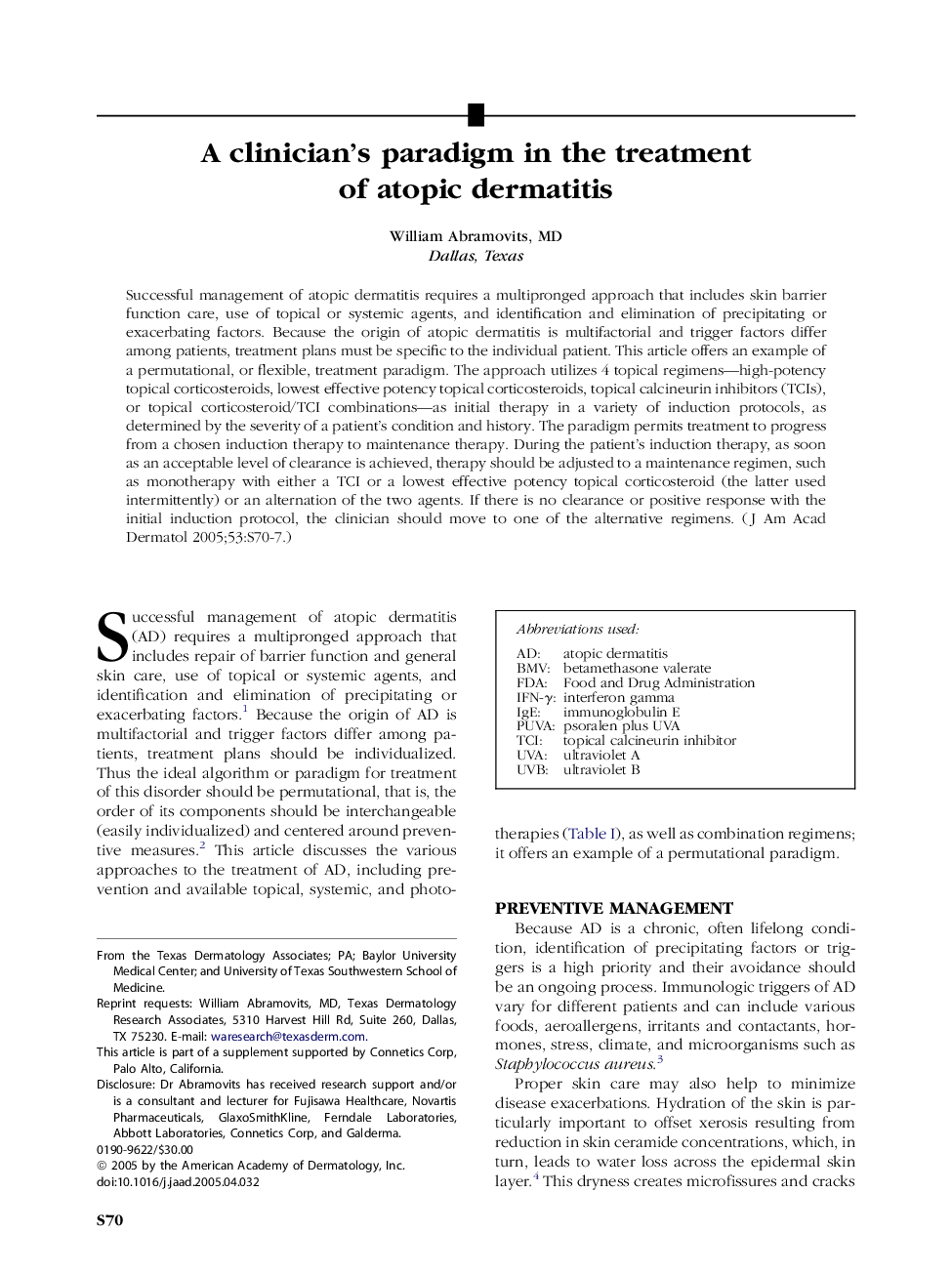| Article ID | Journal | Published Year | Pages | File Type |
|---|---|---|---|---|
| 10010949 | Journal of the American Academy of Dermatology | 2005 | 8 Pages |
Abstract
Successful management of atopic dermatitis requires a multipronged approach that includes skin barrier function care, use of topical or systemic agents, and identification and elimination of precipitating or exacerbating factors. Because the origin of atopic dermatitis is multifactorial and trigger factors differ among patients, treatment plans must be specific to the individual patient. This article offers an example of a permutational, or flexible, treatment paradigm. The approach utilizes 4 topical regimens-high-potency topical corticosteroids, lowest effective potency topical corticosteroids, topical calcineurin inhibitors (TCIs), or topical corticosteroid/TCI combinations-as initial therapy in a variety of induction protocols, as determined by the severity of a patient's condition and history. The paradigm permits treatment to progress from a chosen induction therapy to maintenance therapy. During the patient's induction therapy, as soon as an acceptable level of clearance is achieved, therapy should be adjusted to a maintenance regimen, such as monotherapy with either a TCI or a lowest effective potency topical corticosteroid (the latter used intermittently) or an alternation of the two agents. If there is no clearance or positive response with the initial induction protocol, the clinician should move to one of the alternative regimens.
Keywords
Related Topics
Health Sciences
Medicine and Dentistry
Dermatology
Authors
William MD,
